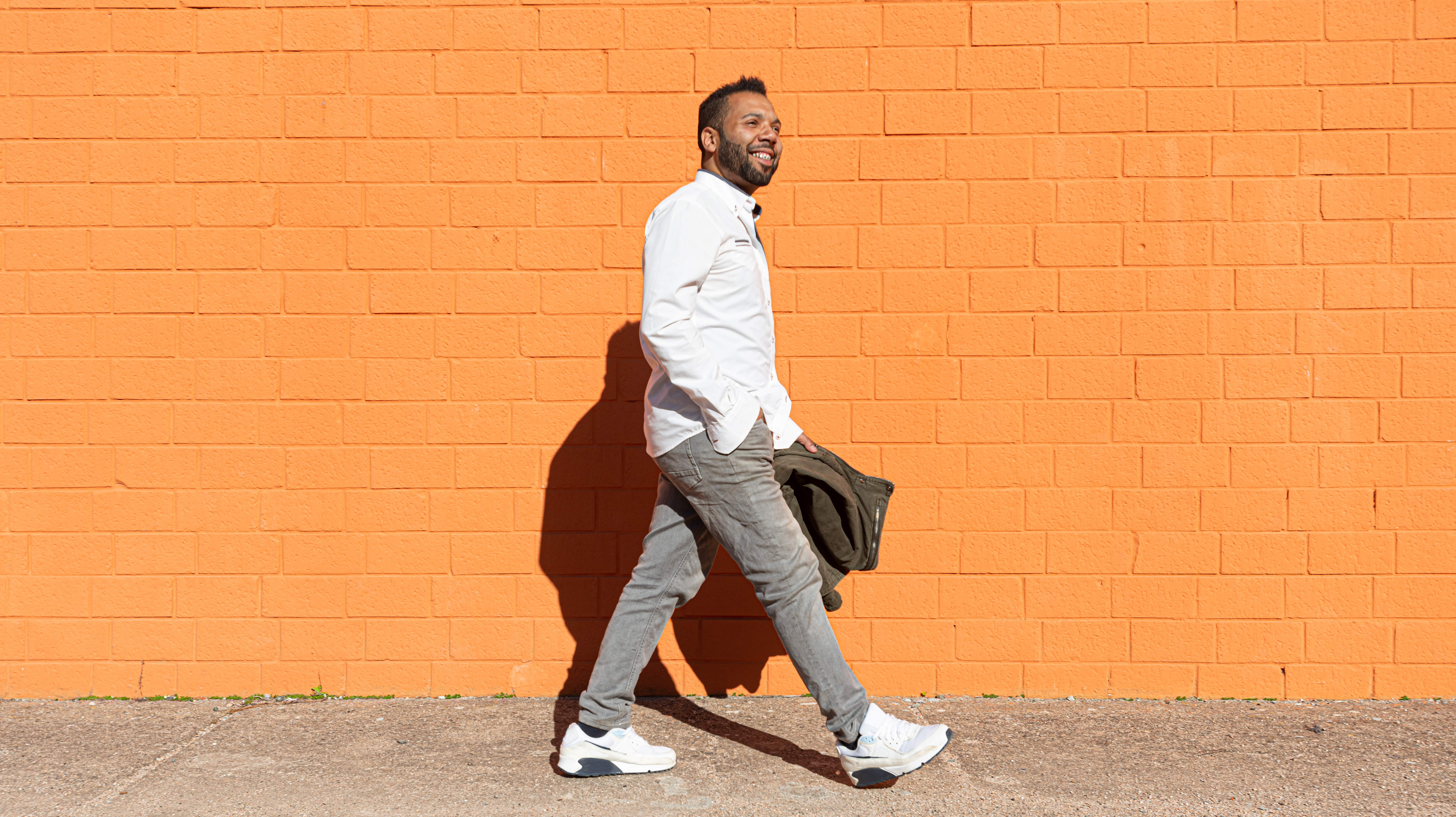This science-backed exercise hack will boost the cardio benefits you get from walking
Adding short bursts of speed to your daily walks can strengthen your heart


Walking has long been celebrated as one of the simplest and most accessible forms of exercise. For years, we’ve been told to aim for that magic number of 10,000 steps a day, but here’s the twist: it’s not just about how many steps you take, but how you take them. A recent study suggests that adding short bursts of speed to your stroll could supercharge its health benefits.
I spoke to Dr. Matthew Ahmadi, a research fellow at the University of Sydney's Charles Perkins centre and faculty of medicine and health about the latest research.
What does the latest research reveal?
Racking up your daily steps will lower your risk for cardiovascular disease and certain cancers. However, Dr. Ahmadi explains that incorporating short bursts of faster walking can offer further benefits.
"Short bursts of higher-intensity walking, or activity in general, can lead to greater improvements in vascular health—like blood pressure—insulin sensitivity, and heart function," he says. "These improvements ultimately lower our risk for cardiovascular disease and cancers."
So while a higher step count lays the foundation for disease prevention, adding intensity can supercharge those results. Think of it like upgrading from a standard to a deluxe workout with minimal extra effort.
Ahmadi adds that fast-paced walking also strengthens the heart, improves cholesterol levels, and even boosts brain health by increasing blood circulation.
How to add faster walking into your routine
You don’t need to power walk everywhere to reap the benefits. Instead, Dr. Ahmadi suggests incorporating brief bursts of faster-paced walking into your existing routine.
Start your week with achievable workout ideas, health tips and wellbeing advice in your inbox.
"This could be as simple as picking up the pace when walking to grab your morning coffee or during portions of your commute that involve walking," he says. "For those who sit for long periods, such as office workers, taking short breaks throughout the day to walk around the block can be a great opportunity to mix in faster-paced walking bouts."
Taking the stairs can also provide similar health benefits to faster-paced walking, according to Dr. Ahmadi. You could also do a 15-minute walking workout at home if you don’t fancy going outside.
Ahmadi says the most important thing to remember is that improving our physical health is a marathon, not a sprint.
"It’s important to keep up these faster-paced walks and hit daily step goals consistently over several days, weeks, and months," says Dr. Ahmadi. "There will be good days and bad days, but a few bad days here and there won’t be detrimental—as long as we have more good days than bad."
Is there a pace that we should aim for?
Like all forms of exercise, the optimal walking pace or cadence will vary from person to person. However, Dr. Ahmadi offers a simple way to gauge your effort using the "talk test":
- If you can talk or sing while walking, you’re at a comfortable pace.
- If you can talk but not sing, you’re walking at a brisk pace.
- If you can only say a few words at a time before needing to pause for breath, you’re at a fast pace.
- If talking isn’t possible, you’re at a very fast pace.
Dr. Ahmadi emphasizes that it’s important not to compare yourself to others, as everyone’s capacity and abilities are different.
"What matters most is increasing your cadence or pace relative to your own individual fitness level and abilities," he explains.
How does fast-paced walking compare to other exercises?
It’s a highly-Googled question: is walking cardio? Dr. Ahmadi says yes, for middle-aged and older adults brisk walking can provide many of the same benefits as gym-based exercises that engage the cardiovascular and aerobic systems.
"The key takeaway here is, 'if we don’t use it, we lose it,'" he says. "We need to engage these systems regularly to maintain or improve our health."
Shorter, faster-paced walks can be just as effective as longer, moderate-paced walks, according to Dr. Ahmadi. But he suggests combining both approaches, to reap the greatest rewards.
"Walking bouts with short bursts of fast pace and longer bouts of moderate pace spaced throughout the day are ideal. Both provide health benefits, which is great because it offers people options to achieve these benefits in a way that fits their schedule, preferences, and what they find accessible."
Holly Treacy is a freelance editor with more than 15 years experience. Previously editor of Natural Health magazine and Health & Wellbeing magazine, Holly specializes in health, wellbeing and lifestyle topics and has edited and written for titles including Stylist, Psychologies, Top Sante, Women's Fitness and Platinum.
She is passionate about women's health, hormonal wellbeing and mental wellness, as well as creating healthy habits as a busy mum of one.
Holly enjoys investigating the mind-body connection and has a holistic approach to health and nutrition. She loves yoga, swimming and walking, especially in the English countryside and she launched, produced and hosted the Walk To Wellbeing podcast.
